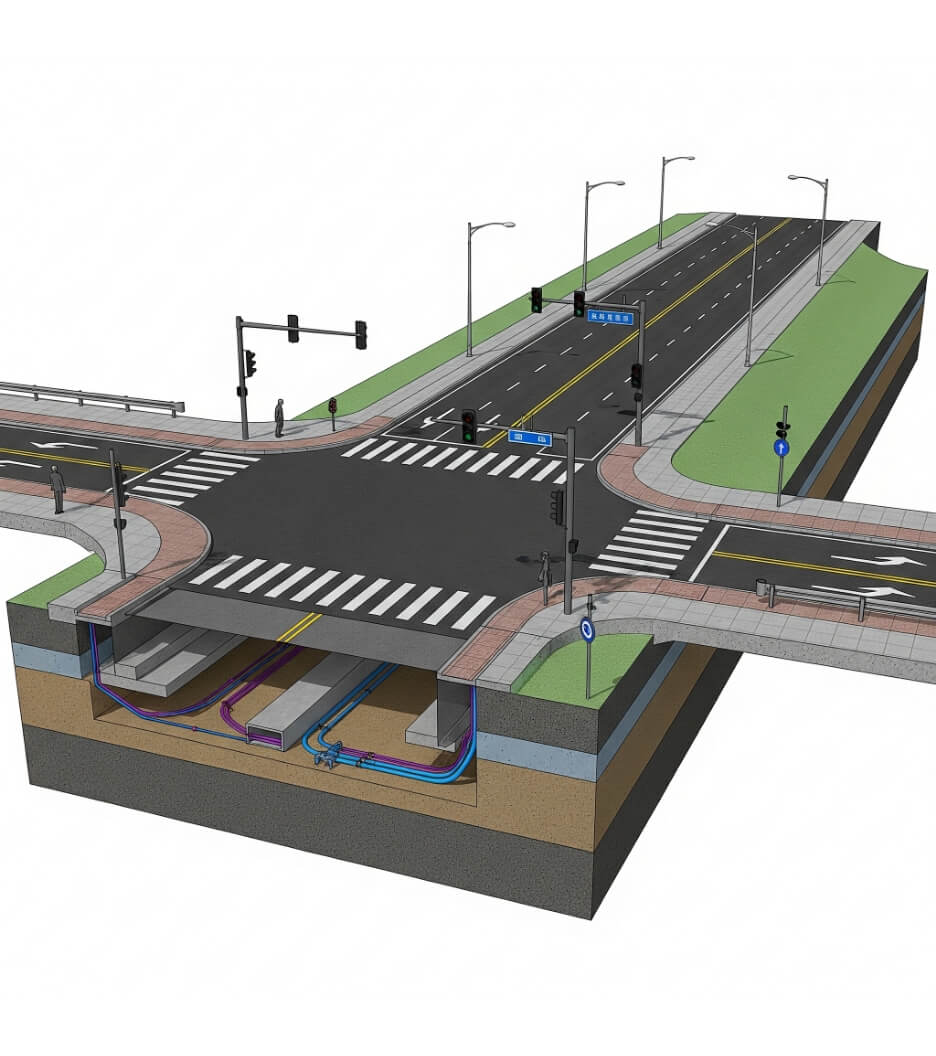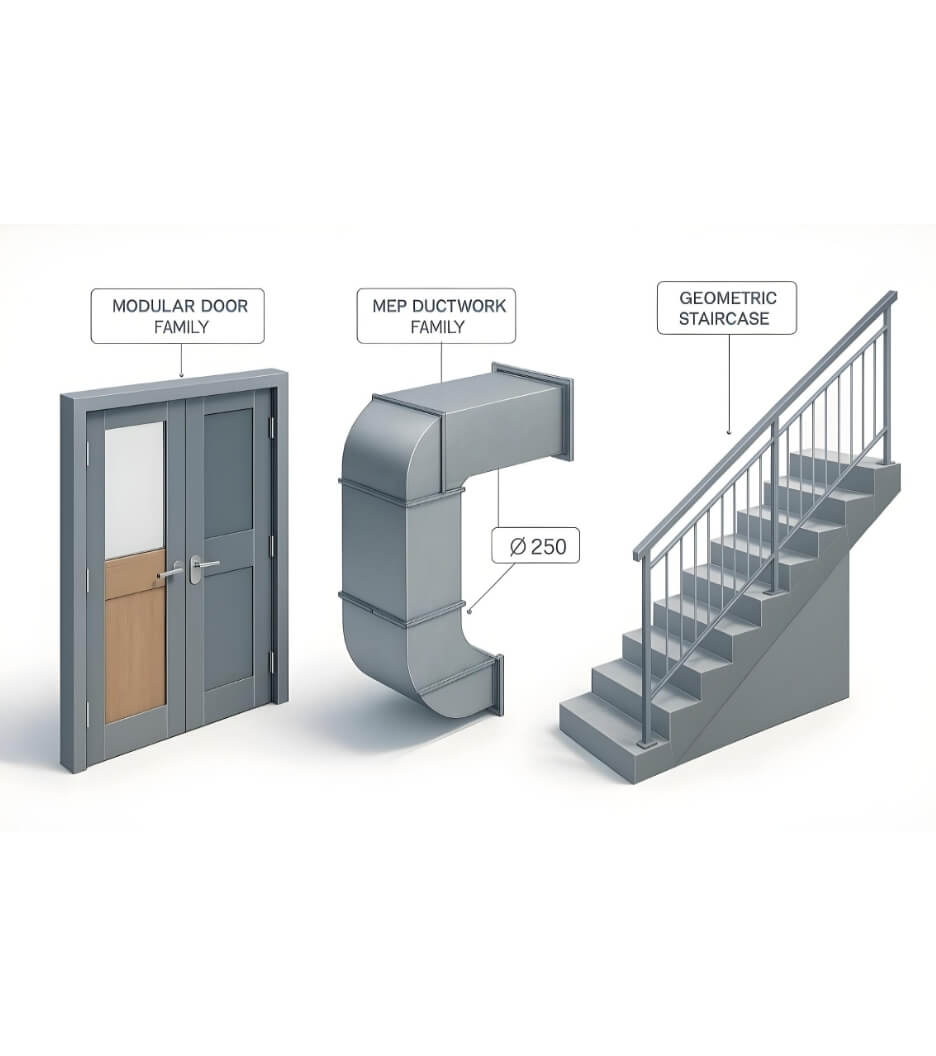 Parth Patel
Parth Patel
Elevate Your BIM and GIS to New Heights and Build Your Digital World
 Parth Patel
Parth Patel

Send Us Your Requirement
BIM and GIS enable businesses to obtain valuable insights from datasets, allowing them to make smarter decisions. Building Information Modeling (BIM) and Geographic Information Systems (GIS) are popular and influential technologies often used to help create more efficient and cost-effective projects in today’s rapidly changing construction industry. As the technological environment and continuous growth in innovation change the shape of AEC sector, it is necessary to understand the importance of BIM services for infrastructure and how the growth of GIS has elevated the potential of design, creativity and accuracy in each project.
Brief Introduction to Building Information Modeling and Geographic Information System
Building information modeling is a process of creating and managing digital representations of the physical and functional characteristics of places. It provides a detailed 3-dimensional image of a building that can be viewed from various perspectives. As a matter of fact, BIM services for infrastructure has brought a revolution in aspects of creativity, opportunities for growth, accurate design, efficient use of materials and improved collaboration among different AEC professionals.
Integrating BIM services technology with GIS data makes it possible to create a comprehensive digital representation of buildings, structures, and their related environment. Top BIM 3D visualization agencies in India and the Netherlands offer expert BIM 3D modeling services to help you hire AEC professionals with the right skills to manage your project.
Increase Project Efficiency with the integration of GIS and BIM
Get a Quote
UniquesCADD is considered a top BIM company, fulfilling client requirements by a team of skilled professionals. As a matter of fact, we also provide comprehensive solutions to facilitate. GIS integration with other related technologies, helping to make the most of your digital assets.
GIS is usually defined as an advanced computer system that captures, stores, analyzes, manages, and presents spatial data. GIS enables users to visualize, query, and analyze geographical data to make informed decisions in infrastructure management, land use planning, asset management, and environmental monitoring. Again, the integration of Building information modeling (BIM) and Geographic information system (GIS) provides an innovative approach to data management that helps propel businesses into the future. GIS enables users to integrate, store, and analyze large data sets in a way that was never possible.
Benefits of Integrating BIM and GIS
Integrating BIM services and GIS provides a comprehensive data-driven approach to understanding the built environment. By combining spatial data from GIS with the detailed design information of BIM technology, users can access more accurate, contextually relevant information. Integrating BIM and GIS provides a unified asset management and decision-making system. With accurate data, organizations can make more informed decisions and better plan their building projects.
Additionally with the rise in technology and innovation in the horizon of architecture and construction, BIM services for infrastructure projects became a wide opportunity for creativity, accuracy and efficiency in projects. It is no wonder that, in today’s growing landscape, BIM has become a powerful tool for AEC professionals that helps to reduce errors, enhance efficiency in design and improves collaboration in the process.
With BIM and GIS integration, stakeholders in the design and construction industry have better visualizations of their projects, more cost savings on materials and labor, improved safety measures, and greater transparency into project progress. By leveraging the power of a top BIM 3D visualization agency, teams can experience greater efficiency and accuracy within their projects, resulting in higher-quality results. BIM modeling services offer highly detailed visual models that help to identify and resolve issues before they become a problem. Apart from that, building information modeling services and GIS can offer a long list of benefits for the AEC industry. The following are the significant benefits:
- Enhanced Data Visualization
- Better Decision Making
- Streamlined Workflow
- Accurate Site Selection
- Asset Management
- Better Planning and Management
- Enhanced Data-driven Insights
- Cost Effective
- Steady Preparation and Response for Natural Calamity
- Enhanced Communication & Collaboration
The list can be long enough. However, these are the major benefits to avail. As a matter of fact, BIM and GIS are powerful tools that can help in improving the efficiency, sustainability, and decision-making of the construction project. Besides, it is one of the strategic and decisive investments that offer long-term advantages in the project, from construction and urban planning to facility management and disaster response.
BIM and GIS Integration Process
BIM and GIS Integration Process
Step 1 – Data Preparation
Step 3 – Data Analysis
Step 2 – Integration of Data
Step 4 – Decision Making
Step 5 – Data Sharing
When talking about BIM and GIS integration into projects, it may sound like a simple task; however, it is a much more ponderous task to perform. The process involves 5 major steps and the crucial geographical data collection to connect GIS and BIM. Let’s take a deeper look into the process of BIM and GIS.
Step 1 – Data Preparation
The foremost step involves data preparation from the BIM model and GIS systems. Once the data is collected, it further consists of organizing, formatting, cleaning, and standardizing the data according to the project.
Step 2 – Integration of Data
After organizing and standardizing the data from GIS and BIM, it further involves storing the data into a single system. With the help of various methods, such as cloud-based integration, it can simplify the data integration process with less time and effort.
Step 3 – Data Analysis
Once the data is integrated into a cloud system, it is further used to gain valuable insights into the project.
Step 4 – Decision Making
The valuable insights gained from data analysis help in making an informed decision for the identification of sites, building designs, and managing the overall construction process effectively and efficiently.
Step 5 – Data Sharing
The data analysis is further shared with AEC professionals, architects, engineers, contractors, and other collaborators, which improvise the communication and collaboration for ease of project completion.
Challenges of Integrating BIM and GIS
The most significant challenge in integrating BIM and GIS is that they are fundamentally different models. While BIM models primarily focus on 3-D representations of a building, GIS models concentrate on 2-D pictures that can be projected onto a map or satellite image. Integrating GIS and BIM data is becoming an ever-popular trend in the industry and will be an increasingly important part of successful projects in the future as it provides detailed information to AEC professionals.
Another challenge is that BIM models often require a high level of detail, and GIS systems often need help displaying such detailed information. This can make it difficult to convey information accurately between the two systems since much of the detail may need to be recovered in translation. As a result, it is essential to select a 3D visualization agency specializing in BIM modeling services who are capable of providing a top-notch visual representation of the data.
Finally, integrating BIM and GIS requires a deep understanding of both systems and their respective data formats and standards. As such, it is time-consuming for those unfamiliar with both systems to integrate them properly. Besides, integrating BIM and GIS requires an in-depth understanding of both systems, their data formats, and standards. Such integration can become tedious for those unfamiliar with the two systems.
Final Say
In conclusion, integrating BIM and GIS can provide numerous benefits to construction projects. By leveraging these two technologies, construction professionals can create more efficient designs, reduce costs, and make better decisions that ultimately result in higher-quality projects. Integrating BIM and GIS has become increasingly important in the construction industry and is only set to become more prevalent.


